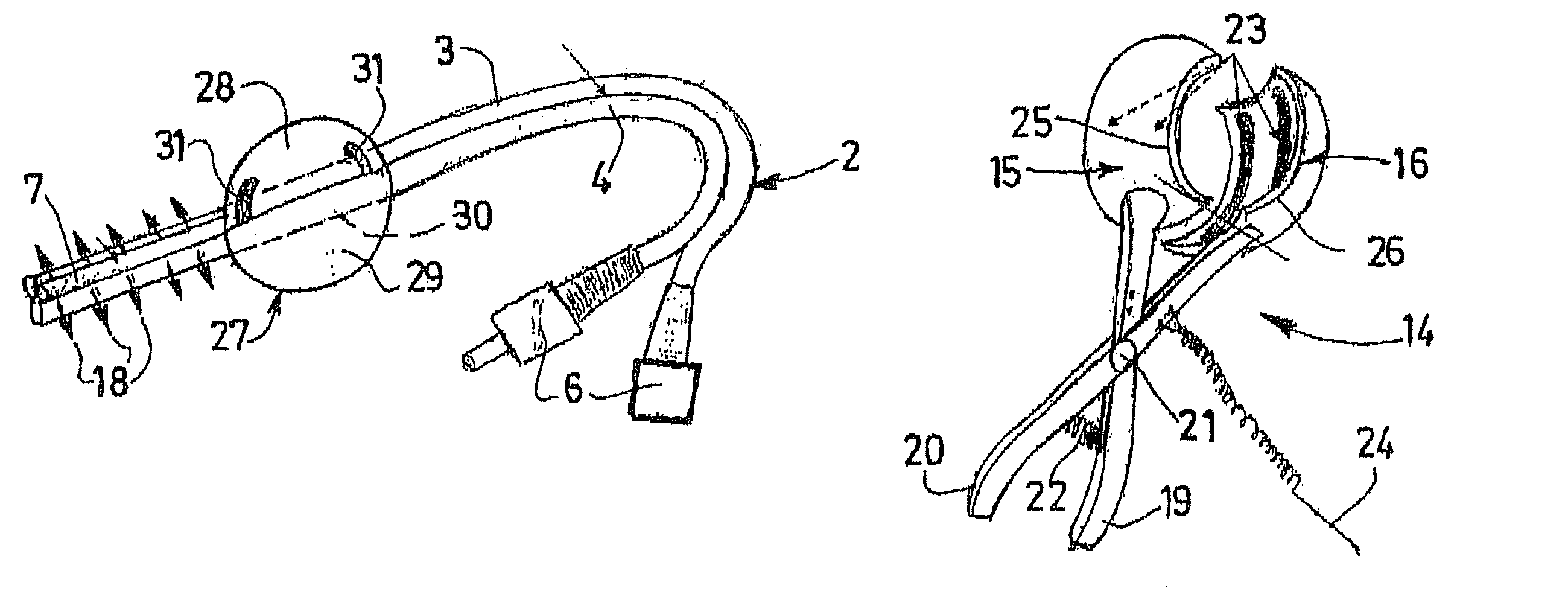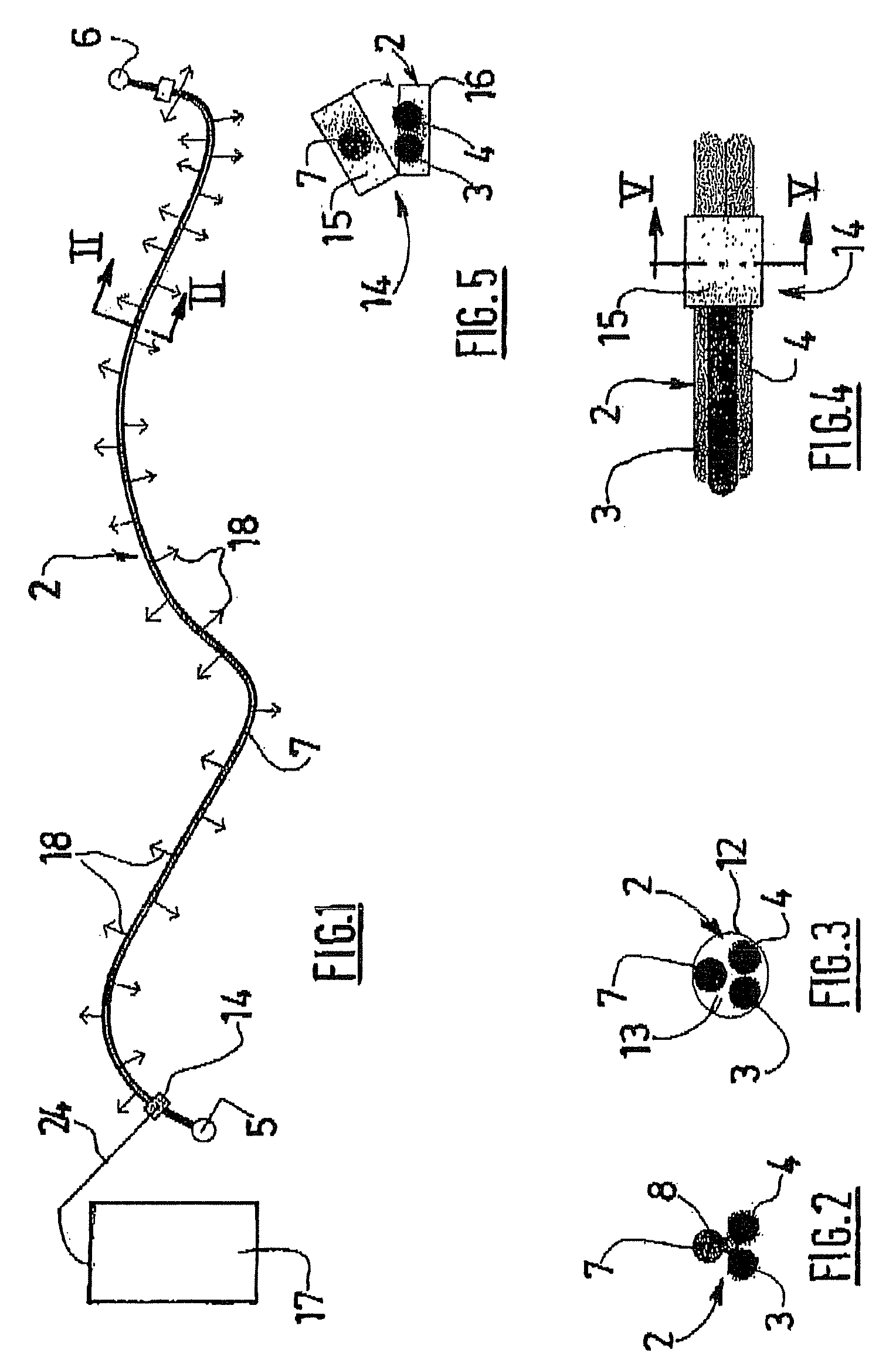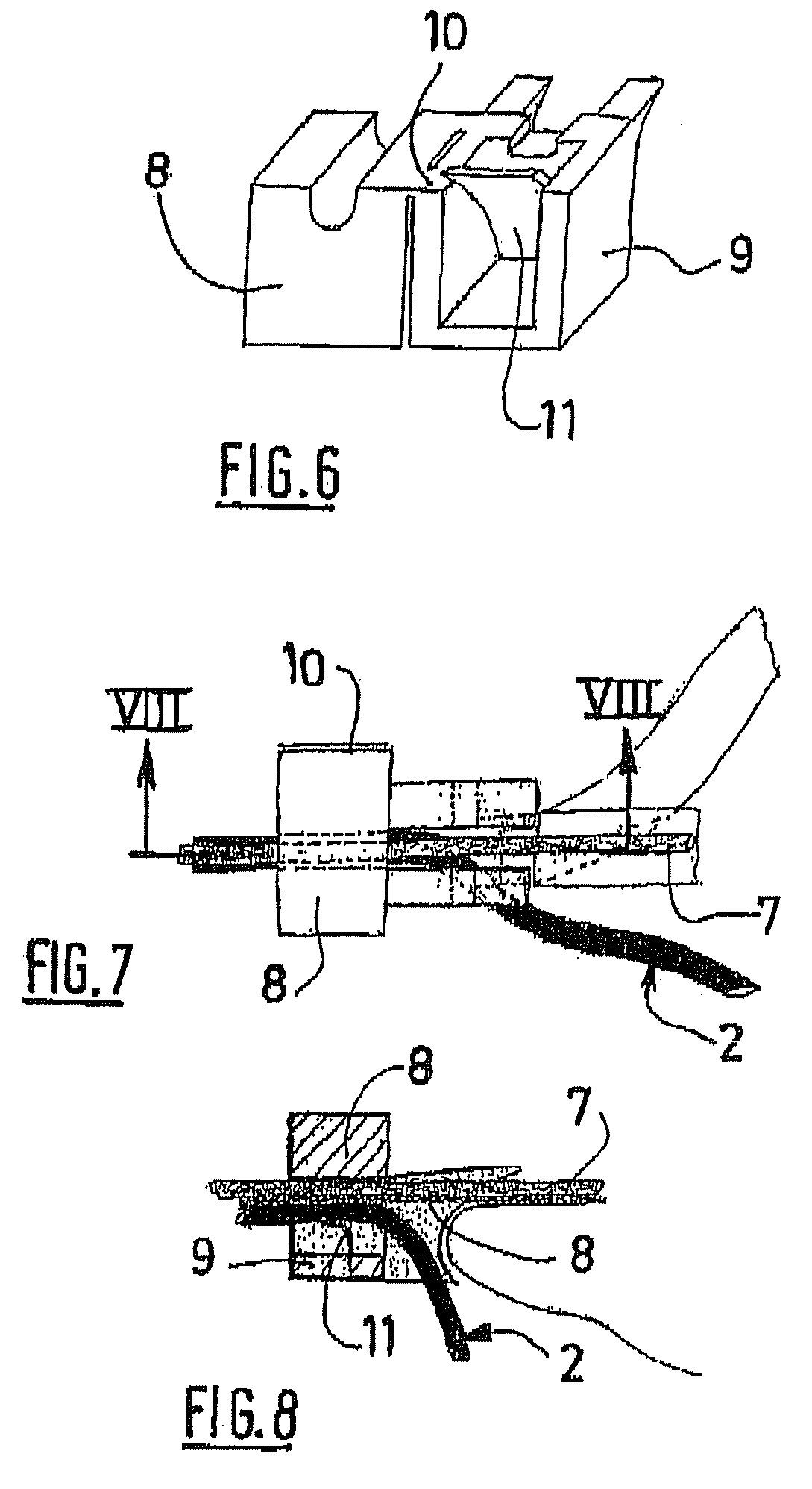Identification device for visually identifying cables or ducts over their entire length
a technology of visual identification and identification device, which is applied in the direction of non-rotary current collectors, geological measurements, rotary current collectors, etc., can solve the problems of human error risk, inability to apply a method in the case of cables or ducts having portions that are manually or visually, and inability to accurately identify cables. , to achieve the effect of facilitating its passage in cramped spaces and without the risk of catching
- Summary
- Abstract
- Description
- Claims
- Application Information
AI Technical Summary
Benefits of technology
Problems solved by technology
Method used
Image
Examples
Embodiment Construction
[0041]Referring firstly to FIGS. 1 to 5, the identification device is shown, as an example of its application, in combination with an optical patch cord, that is to say a cord denoted overall by the numerical reference 2, which joins two parallel optical fibres 3 and 4. The two ends of the cord 2 have optical connectors 5 and 6, that are known per se and not detailed here.
[0042]The identification device, associated with the cord 2, mainly comprises an electroluminescent wire 7 that extends along the cord 2, practically from one end of this cord 2 to the other, to which it is fastened by means that will be described below.
[0043]As regards the electroluminescent wire 7 itself, this is a product known per se, and especially one used hitherto for decorative purposes, which includes a central electrical conductor or “core” that is covered with a phosphor-based layer having electroluminescent properties. Said layer is itself surrounded by at least one other outer electrical conductor woun...
PUM
 Login to View More
Login to View More Abstract
Description
Claims
Application Information
 Login to View More
Login to View More - R&D
- Intellectual Property
- Life Sciences
- Materials
- Tech Scout
- Unparalleled Data Quality
- Higher Quality Content
- 60% Fewer Hallucinations
Browse by: Latest US Patents, China's latest patents, Technical Efficacy Thesaurus, Application Domain, Technology Topic, Popular Technical Reports.
© 2025 PatSnap. All rights reserved.Legal|Privacy policy|Modern Slavery Act Transparency Statement|Sitemap|About US| Contact US: help@patsnap.com



